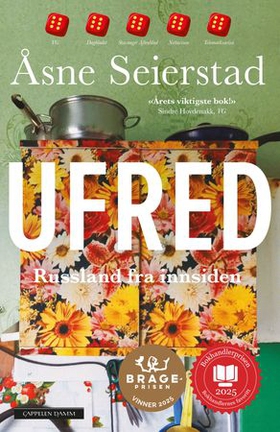
Legg til i ønskeliste
The Art of Discarding lydbok
236,-
A combination of tiny homes and a love of stylish homeware has left Japanese people hungry for advice on organization, decluttering and tidying up. Indeed, in this era of mass consumption, we are all drowning in 'stuff', despite our best efforts to keep on top of the clutter that collects in our homes, our office spaces and even our cars. All this clutter causes us mental anguish, however, as we all know, throwing things away can be difficult - it clashes with the values instilled in us from an…
Undertittel
How to get rid of clutter and find joy
Forlag
Yellow Kite
Utgitt
28 februar 2019
Lengde
3:38
Sjanger
Dokumentar og fakta, Helse og livsstil
Språk
English
Format
mp3
DRM-beskyttelse
App-only
ISBN
9781473649132
A combination of tiny homes and a love of stylish homeware has left Japanese people hungry for advice on organization, decluttering and tidying up. Indeed, in this era of mass consumption, we are all drowning in 'stuff', despite our best efforts to keep on top of the clutter that collects in our homes, our office spaces and even our cars. All this clutter causes us mental anguish, however, as we all know, throwing things away can be difficult - it clashes with the values instilled in us from an early age of not wasting things, reusing items, and keeping things 'for a rainy day' - simply put, we feel guilty about getting rid of things. Enter Nagisa Tatsumi and her bold suggestion - that it's OK to throw stuff away.
Tatsumi's book 'Suteru Gijyutsu', or The Art of Discarding, was a sensation when it was published in Japan, selling 1 million copies in the first six months after publication in 2000. In it, she argues that we need to learn to let go, and tackles head-on the psychological issues that people have with getting rid of things, in particular a reluctance to discard things 'just in case', the desire to hoard things, and guilt about getting rid of things that were given as gifts.
The book offers practical advice and techniques to help readers learn to let go of stuff that is holding them back, as well as advice on acquiring less in the first place; if we buy less, there's less to get rid of. She takes readers through a step-by-step process of getting rid of household items, clothes, books - and promises a clutter-free, calmer life where we are free from 'accumulation syndrome' and ultimately, less is more.
(P) 2017 Hodder & Stoughton
Tatsumi's book 'Suteru Gijyutsu', or The Art of Discarding, was a sensation when it was published in Japan, selling 1 million copies in the first six months after publication in 2000. In it, she argues that we need to learn to let go, and tackles head-on the psychological issues that people have with getting rid of things, in particular a reluctance to discard things 'just in case', the desire to hoard things, and guilt about getting rid of things that were given as gifts.
The book offers practical advice and techniques to help readers learn to let go of stuff that is holding them back, as well as advice on acquiring less in the first place; if we buy less, there's less to get rid of. She takes readers through a step-by-step process of getting rid of household items, clothes, books - and promises a clutter-free, calmer life where we are free from 'accumulation syndrome' and ultimately, less is more.
(P) 2017 Hodder & Stoughton






